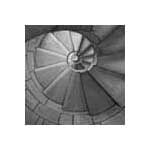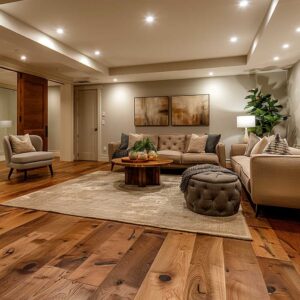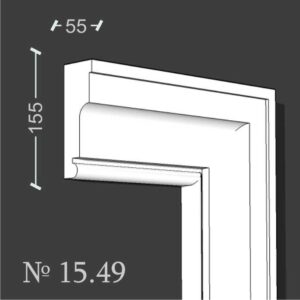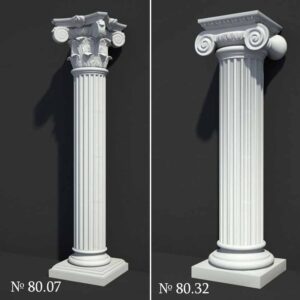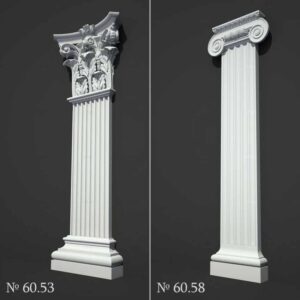Have you been eyeing that gleaming wooden floor in your favorite cafe or friend’s house and dreaming of having it in your own home? Engineered wood flooring might be the perfect solution for you!
Not only does it offer the beauty of natural wood, but it also comes with added durability and ease of installation. In this post, we’ll explore the various types of engineered wood flooring, diving into their unique features and benefits.
Read on to learn more about engineered flooring options.
What is Engineered Wood Flooring?
Engineered wood flooring is crafted from multiple layers of wood, with the top layer being real hardwood. This structure gives it the same visual appeal as solid wood but with enhanced stability and resistance to changes in humidity and temperature.
Layers of Durability
The core of engineered wood flooring is made from plywood, high-density fiberboard (HDF), or softwood. These layers are bonded together under heat and pressure, making the flooring more stable and less prone to warping compared to traditional hardwood.
Versatility at Its Best
Engineered wood flooring can be installed over various types of subfloor, including concrete, making it versatile for different home setups. It can even be installed as a floating floor, which doesn’t require nails or glue, making the process quicker and easier.
Benefits of Engineered Wood Flooring
Engineered wood flooring is increasingly becoming a popular choice among homeowners, and it’s easy to see why. This type of flooring combines the aesthetic appeal of natural hardwood with enhanced durability and practicality.
Stability and Durability
One of the primary advantages of engineered wood flooring is its stability. The multi-layer construction minimizes the expansion and contraction that can lead to gaps or warping.
Easy Maintenance
Engineered wood flooring is low maintenance and easy to clean. Generally, all that’s needed to maintain its best appearance is the occasional moist cloth mop and routine sweeping.
Aesthetic Appeal
With engineered wood flooring, you get the beauty of real wood without the high maintenance. The top layer of hardwood gives it an authentic look that can enhance the aesthetic appeal of your home.
Different Types of Engineered Wood Flooring
Now that we’ve covered the basics of engineered wood flooring, let’s take a closer look at the different types of wood species used in its top layer.
Oak
Oak is a popular choice for engineered wood flooring due to its strength and classic grain pattern. It comes in various shades, from light to dark, and can be finished in many ways to suit different decor styles.
Maple
Maple offers a sleek and modern look with its fine, even grain. It’s a harder wood, making it resistant to scratches and dents, which is ideal for high-traffic areas.
Hickory
Hickory is known for its distinct, rustic appearance with varied color patterns. It’s one of the hardest woods available, providing excellent durability and resistance to wear and tear.
Walnut
For those who desire a rich and luxurious look, walnut is an excellent choice for engineered wood flooring. This species is known for its deep, dark brown color and straight grain, which adds an element of sophistication to any space.
Cherry
Cherry wood is prized for its beautiful reddish-brown hues that deepen over time, adding warmth and charm to your home. Its smooth grain and rich color variations can create a stunning visual effect, especially in rooms with ample natural light.
Bamboo
Though technically a grass, bamboo is often included in the category of engineered wood flooring due to its similar appearance and properties. Bamboo is highly sustainable and environmentally friendly.
Timber
Timber, also known as lumber in some regions, is another popular choice for engineered wood flooring. Derived from softwood or hardwood trees, timber is processed into various sizes and grades to suit a multitude of applications. Engineered timber flooring provides a robust core structure, contributing to the overall stability and strength of the floorboards.
Different Finishes for Engineered Wood Flooring
Apart from the type of wood species, the finish is another aspect that can significantly impact the look and feel of your engineered wood flooring. Here are a few popular finishes to consider:
Matte Finish
A matte finish gives a natural, understated look to the wood, enhancing its organic beauty. It’s also great for hiding minor scratches and dents, making it a practical choice for busy households.
Semi-Gloss Finish
Semi-gloss offers a bit more shine than matte but still maintains a sophisticated appearance. It reflects more light, which can make smaller rooms appear larger and brighter.
High-Gloss Finish
For those who love a shiny, polished look, high-gloss finish is the way to go. While it’s stunning, it does show scratches and dust more easily, so it might require more frequent cleaning.
Installation Methods for Engineered Wood Flooring
As mentioned earlier, engineered wood flooring can be installed in various ways, depending on the needs of your space. Here are the three main installation methods:
Floating Floor
Floating floors are not attached to the subfloor; instead, the planks are connected to each other. This method is quick and easy, making it a popular choice for DIY enthusiasts. It also allows for natural expansion and contraction.
Glue-Down
In the glue-down method, the adhesive is applied to the subfloor, and the planks are laid on top. This provides a stable and secure installation. It’s a good option for areas where noise reduction is important, as it minimizes creaking.
Nail-Down
The nail-down method involves securing the planks to the subfloor with nails. This traditional method offers a very stable floor, though it requires more time and effort to install. It’s typically used with thicker engineered wood planks.
Cost Considerations
While the cost of engineered wood flooring can vary depending on factors like wood species, finish, and installation method, it’s generally more affordable than solid hardwood.
Initial Investment
While engineered wood flooring can be more expensive upfront compared to laminate or vinyl, it’s generally more affordable than solid hardwood. The initial cost will depend on the wood species, finish, and thickness you choose.
Long-Term Value
Because engineered wood flooring is durable and can be refinished, it offers great long-term value. Investing in quality flooring materials and professional installation can pay off the longevity and beauty of your floors.
Exploring the Types of Engineered Wood Flooring
Engineered wood flooring is an excellent choice for anyone looking to combine the beauty of hardwood with enhanced durability and ease of maintenance. With various types of engineered wood flooring available, there’s an option to suit every style and budget.
For more helpful tips, check out the rest of our site today!
